Cut throat razors have been used for centuries by barbers and enthusiasts to achieve a close and precise shave. However, like any other cutting tool, the razor’s edge dulls over time and requires sharpening. Sharpening a cut throat razor can seem daunting, but with the right techniques and tools, it can be a straightforward process that yields excellent results.
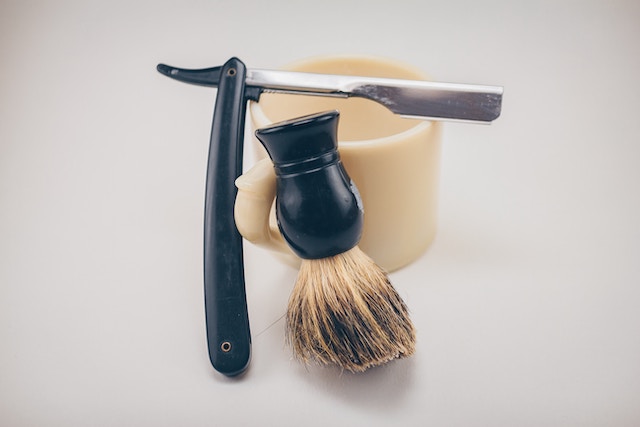
To sharpening a cut throat razor, one must first understand the fundamentals of the razor itself. A cut throat razor, also known as a straight razor, consists of a blade that folds into a handle. The blade is typically made of high-carbon steel, which allows it to hold a sharp edge for an extended period. However, this also means that the blade is susceptible to rust and corrosion. Understanding the razor’s construction and properties is essential to properly maintain and sharpen it.
Sharpening a cut throat razor involves two fundamental processes: stropping and honing. Stropping is the process of refining and polishing the blade’s edge, while honing is the process of removing any nicks or chips in the blade’s edge. Both processes are vital to maintaining a sharp and effective razor. With the right techniques and tools, anyone can sharpen a cut throat razor and achieve a smooth and comfortable shave.
Key Takeaways
- Understanding the fundamentals of a cut throat razor is essential to properly maintain and sharpen it.
- Sharpening a cut throat razor involves both stropping and honing processes.
- With the right techniques and tools, anyone can sharpen a cut throat razor and achieve a smooth and comfortable shave.
Understanding Cut Throat Razors
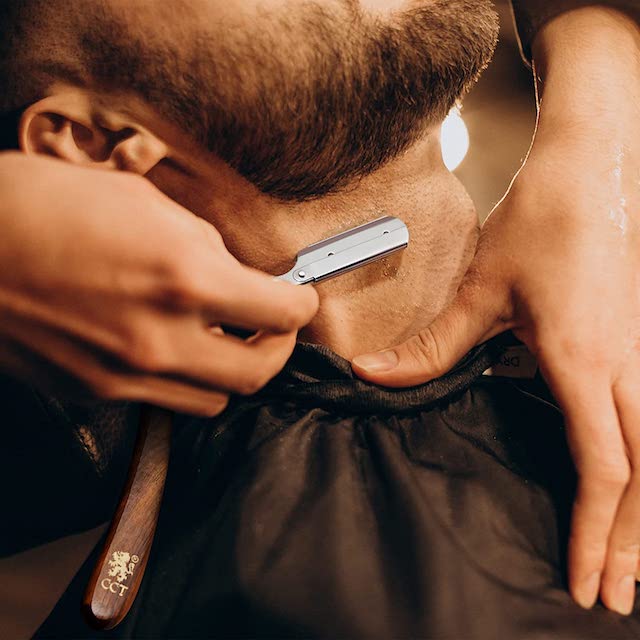
Cut throat razors, also known as straight razors, are classic shaving tools that have been used for centuries. They consist of a single, sharp blade that folds into the handle. Understanding the different types of cut throat razors and their blades is essential for achieving a smooth and safe shave.
Straight Razor vs. Cut Throat Razor
The terms “straight razor” and “cut throat razor” are often used interchangeably. However, there is a slight difference between the two. A straight razor is a razor with a completely straight blade, while a cut throat razor has a blade that curves slightly near the tip. The curve makes it easier to maneuver around the contours of the face and neck.
Stainless Steel and Carbon Steel Blades
Cut throat razors are typically made of either stainless steel or carbon steel. Stainless steel blades are more resistant to rust and corrosion, making them easier to maintain. However, they can be more difficult to sharpen than carbon steel blades. Carbon steel blades are softer and easier to sharpen, but they require more maintenance to prevent rust and corrosion.
When choosing a cut throat razor, it is important to consider the type of blade that will work best for your needs. A stainless steel blade may be a better option for those who want a low-maintenance razor, while a carbon steel blade may be preferred by those who want a razor that can be easily sharpened for a very close shave.
Overall, understanding the differences between straight razors and cut throat razors, as well as the types of blades available, is essential for anyone interested in using these classic shaving tools. With the right knowledge and technique, a cut throat razor can provide a close, smooth shave that lasts longer than any disposable razor.
Preparation for Sharpening a cut throat razor
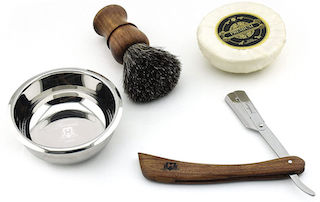
Before sharpening a cut throat razor, it is important to properly prepare the razor. This includes cleaning the razor and inspecting the blade. The following subsections will cover these steps in detail.
Cleaning the Razor
Cleaning the razor is an important step in preparing it for sharpening. The razor should be cleaned of any dirt, oil, or debris that may have accumulated on the blade. This can be done using warm water and soap. It is important to rinse the razor thoroughly after cleaning to ensure that all soap residue is removed.
Inspecting the Blade
Inspecting the blade is an important step in ensuring that the razor is in good condition before sharpening a cut throat razor. The blade should be checked for any nicks, chips, or other damage that may affect the quality of the sharpening. If any damage is found, the razor should be repaired or replaced before sharpening.
It is also important to ensure that the blade is straight and not warped. This can be done by holding the blade up to the light and checking for any gaps or bends in the blade. If the blade is warped, it should be straightened before sharpening.
In addition to cleaning and inspecting the razor, it is recommended to take a hot shower before sharpening. This will help to soften the skin and make it easier to shave with the newly sharpened razor.
Overall, properly preparing before sharpening a cut throat razor is crucial to achieving a high-quality shave. By following these steps, the razor will be in optimal condition for sharpening and will provide a smooth and precise shave.
Stropping Fundamentals
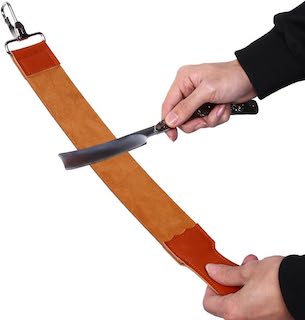
Choosing the Right Strop
Before stropping, it is important to choose the right strop. A leather strop is the most common type of strop used for straight razors. When selecting a leather strop, it is important to consider the type of leather used and the width of the strop. A good quality leather strop should be made from vegetable-tanned leather, which is more durable and has a better surface for stropping. The width of the strop should be at least 2 inches, which allows for a full stroke of the razor.
Stropping Technique
Stropping is a crucial step in maintaining a sharp edge on a cut throat razor. The technique involves running the blade along a leather strop to remove any burrs or imperfections on its surface. Here are the steps to follow for proper stropping technique:
- Hold the strop taut between two fixed points, such as a hook or doorknob.
- Hold the razor at a 30-40 degree angle to the strop with the spine of the blade leading.
- Place the razor on the leather side of the strop with the cutting edge facing away from you.
- Pull the razor towards you with a light pressure, using the full length of the strop.
- Lift the razor off the strop at the end of the stroke, and repeat the process on the other side of the strop.
- Alternate sides for approximately 40-70 strokes, or until the razor is sharp.
It is important to use a light pressure when stropping to avoid damaging the blade or altering the sharpening angle. A proper stropping technique can help extend the life of a cut throat razor and ensure a smooth, comfortable shave.
Honing the Razor
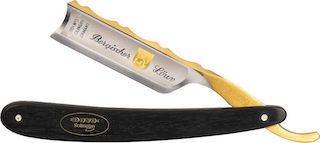
Honing a cut throat razor is a process of removing metal from the blade to sharpen it. This process is essential to maintain the sharpness of the razor and to ensure a smooth and comfortable shave. Honing a cut throat razor requires a keen eye for detail and a bit of time. In this section, we will discuss the steps involved in honing a cut throat razor.
Selecting a Honing Stone
The first step in honing a cut throat razor is selecting the right honing stone. There are different types of honing stones available in the market, and each stone has its unique properties. The most commonly used honing stones are natural stones and synthetic stones.
Natural stones are made from natural materials such as Novaculite, Belgian Blue, and Coticule. These stones are known for their high quality and excellent sharpening properties. However, they are expensive and require a lot of maintenance.
Synthetic stones, on the other hand, are made from man-made materials such as ceramic, diamond, and aluminum oxide. These stones are less expensive and require less maintenance than natural stones. However, they are not as effective as natural stones in sharpening a cut throat razor.
When selecting a honing stone, it is essential to consider the grit size. The grit size determines how coarse or fine the stone is. A coarse stone with a low grit size is used for removing nicks and chips from the blade, while a fine stone with a high grit size is used for polishing and refining the edge.
Honing Technique and Angle
Once the right honing stone has been selected, the next step is to hone the razor. The honing technique involves carefully removing metal from the blade using a series of abrasives until it is back to being “shave ready.” The honing angle is also crucial in this process. The honing angle is the angle between the blade and the honing stone.
The ideal honing angle for a cut throat razor is between 15 and 20 degrees. This angle ensures that the blade is sharp enough to cut hair without causing irritation. It is essential to maintain this angle throughout the honing process.
To hone the razor, first, apply a few drops of honing oil to the honing stone. Then, hold the razor at the correct honing angle and stroke it across the stone. Start with the coarsest grit and work your way up to the finest grit. Make sure to use light pressure and maintain the honing angle throughout the process.
In conclusion, honing a cut throat razor is an essential process to maintain its sharpness and ensure a smooth and comfortable shave. Selecting the right honing stone and using the correct honing technique and angle are crucial in this process.
Maintaining the Sharp Edge
To ensure that your cut throat razor is always in top condition, it is important to maintain its sharp edge. Here are some tips on how to do it:
Regular Stropping
Stropping is the process of running the razor blade along a leather or cloth strop to maintain its edge. It is recommended to strop your razor before and after each use to keep it sharp and in good condition.
When stropping, it is important to lay the blade flat on the strop and use light pressure. Always move the razor towards the back of the blade and not towards the cutting edge, as this can damage the blade and the strop. The blade should stand at an angle of 30-40 degrees to the strop.
When to Hone
While regular stropping can help maintain the razor’s edge, it is important to hone the blade from time to time to keep it sharp. Honing involves using a sharpening stone to remove any nicks or chips in the blade and restore its sharp edge.
It is recommended to hone your razor every few months or as needed, depending on how often you use it. If you notice that your razor is not cutting as well as it used to or is pulling on your hair, it may be time to hone the blade.
By following these simple tips, you can ensure that your cut throat razor stays sharp and in top condition for a long time.
Shaving Technique
Pre-Shave Preparation
Before beginning the shave, it is important to properly prepare the skin and the razor. This can be achieved by taking a few simple steps:
- Cleanse the skin thoroughly with warm water and a gentle cleanser to remove any dirt or oil that may be present.
- Apply a pre-shave oil or cream to the skin to help lubricate and protect it during the shave.
- Soak a towel in warm water and place it over the face for a few minutes to help soften the hair and open up the pores.
- Apply a shaving cream or soap to the face, using a brush to create a rich lather that will help the razor glide smoothly over the skin.
By taking these steps, the skin will be better prepared for the shave, and the razor will be able to perform at its best. Take a look at this article regarding shower before or after shaving?.
Effective Shaving Strokes
When shaving with a cut throat razor, it is important to use the right technique to achieve a close, smooth shave. Here are some tips to keep in mind:
- Hold the razor at a 30-degree angle to the skin, with the blade facing downwards.
- Use short, light strokes, moving the razor in the direction of hair growth.
- Stretch the skin taut with your free hand to help create a smooth surface for the razor to glide over.
- Shave in small sections, rinsing the razor frequently to remove any hair or cream that may have accumulated.
- Use a light touch, allowing the weight of the razor to do the work rather than pressing down too hard.
By following these tips, it is possible to achieve a close, smooth cut throat shave that will leave the skin feeling soft and smooth.
Aftercare and Storage
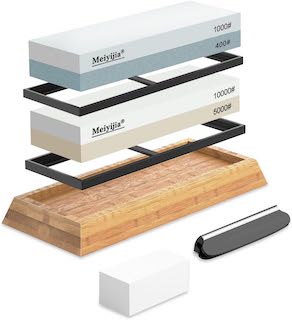
Cleaning After Use
After using a cut throat razor, it is important to clean it properly. Rinse the blade with warm water to remove any remaining shaving cream or hair. Dry the blade with a towel immediately after washing to prevent rusting. If there is any hair or debris left on the blade, use a soft-bristled brush to gently remove it. Avoid using harsh chemicals or abrasive materials as they can damage the blade.
How to Clean Razor Handle
To clean a razor handle, start by rinsing it under warm water to remove any hair, shaving cream, or soap residue. Use a gentle liquid soap or mild detergent to lather the handle, ensuring that you cover all surfaces. Use a soft-bristled brush or cloth to gently scrub the handle, paying extra attention to any hard-to-reach areas or crevices. Rinse the handle thoroughly with warm water to remove all soap and dirt.
Finally, dry the handle with a clean towel to prevent water spots or rusting. If the handle is made of a special material like wood or metal, be sure to use a cleaning method suitable for that material to avoid damage.
Proper Storage Solutions
Storing a cut throat razor properly is crucial to maintaining its sharpness and preventing rusting. After cleaning, dry the blade thoroughly with a towel before storing it. Avoid storing the razor in a damp or moist environment as this can lead to rusting.
One of the best ways to store a cut throat razor is in a wooden box. A wooden box provides excellent protection from moisture and other damaging elements. It also keeps the razor out of direct sunlight, which can cause the blade to become brittle.
Another option is to use a leather strop to store the razor. The strop not only keeps the blade safe but also helps to maintain its sharpness. Simply wrap the blade in a soft cloth and place it on the strop. Make sure to store the strop in a dry place to prevent moisture from damaging the blade.
In summary, after using a cut throat razor, clean it properly and store it in a dry place to prevent rusting. A wooden box or leather strop are excellent storage solutions that provide protection and help to maintain the razor’s sharpness.
Troubleshooting Common Issues
Dealing with Rust and Bluntness
One of the most common issues with cut throat razors is rust and bluntness. Rust can form on the blade due to moisture, while bluntness can occur due to regular use. To deal with rust, it is recommended to use a rust remover solution and a soft cloth. Apply the solution on the rusted area and gently rub it with the cloth. This should remove most of the rust. For bluntness, stropping the blade on a leather strop can help sharpen it. However, if the blade is severely blunt, honing it with a sharpening stone may be necessary.
Avoiding Nicks and Cuts
Nicks and cuts are another common issue when using a cut throat razor. To avoid nicks and cuts, it is important to maintain the correct angle while shaving. The blade should be held at an angle of 30-40 degrees to the skin. Using too much pressure while shaving can also cause nicks and cuts. It is important to use light, gentle strokes while shaving. Additionally, using a pre-shave oil can help reduce irritation and razor burn, which can also lead to nicks and cuts.
In summary, rust and bluntness can be dealt with using a rust remover solution and a leather strop or sharpening stone, while nicks and cuts can be avoided by maintaining the correct angle and using light, gentle strokes while shaving. Using a pre-shave oil can also help reduce irritation and razor burn, which can lead to nicks and cuts.
Additional Suggested Reading
Try visiting a webpage like Master Shaving for more related shaving tips
Frequently Asked Questions
What is the proper technique for using a sharpening stone on a straight razor?
Using a sharpening stone on a straight razor is a delicate process that requires precision and patience. The proper technique involves holding the razor at a consistent angle and using light, even pressure to move the blade across the stone. It’s important to use a fine-grit stone and to avoid applying too much pressure, as this can damage the blade.
How often should a straight razor be stropped for optimal sharpness?
Stropping a straight razor is an essential part of maintaining its sharpness. To ensure optimal sharpness, a straight razor should be stropped before each use. This helps to realign the blade’s edge and remove any microscopic imperfections that may have formed during use.
Is it possible to restore the edge of a straight razor without using a strop?
While it’s possible to restore the edge of a straight razor using other sharpening methods, such as a honing stone or a sharpening rod, using a strop is the most effective way to maintain the razor’s edge. Stropping helps to refine and polish the blade, ensuring a smooth and sharp edge.
Can a traditional knife sharpener be effectively used on a straight razor?
Traditional knife sharpeners, such as sharpening stones or electric sharpeners, are not recommended for use on straight razors. These sharpeners are designed for thicker blades and can damage the delicate edge of a straight razor. It’s best to use a strop or other specialized sharpening tools designed specifically for straight razors.
What are the steps to sharpen a straight razor using a leather strap?
To sharpen a straight razor using a leather strap, first, apply a small amount of honing oil or water to the leather. Then, hold the razor at a consistent angle and use light, even pressure to move the blade across the leather. Repeat this process several times, alternating sides of the blade, until the razor is sharp. Finish by stropping the razor to refine and polish the edge.
How frequently should the blade of a straight razor be replaced or sharpened for best performance?
The frequency with which a straight razor should be sharpened or replaced depends on a variety of factors, including how often it’s used and how well it’s maintained. Generally, a straight razor should be sharpened or replaced when it starts to feel dull or when it’s no longer performing as well as it used to. With proper maintenance and care, a high-quality straight razor can last for many years.























